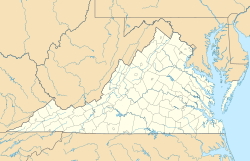Fauquier White Sulphur Springs | |
|---|---|
Resort | |
 An image of the Fauquier White Sulphur Springs resort before the American Civil War. | |
| Coordinates: 38°48′18″N77°40′30″W / 38.805°N 77.675°W | |
| Country | United States |
| State | Virginia |
| County | Fauquier |
Fauquier White Sulphur Springs was a resort area located in Fauquier County, Virginia. Established in the 19th century, it was renowned for its mineral springs, which were purported to cure many diseases. The resort was popular for a time with influential governmental figures.
Contents
- During the American Civil War
- Mary Chesnut's Diary
- Temporary Residence of Virginia Legislature
- External links
- References
An 1888 pamphlet published by the proprietors listed a large number of diseases the water of the springs was supposed to cure:
The Spring is a chalybeated sulphur water, alterative, diuretic and tonic, and for many years has been known to be particularly beneficial in the varied forms of Dyspepsia, Diseases of the Bowels, Liver and other Organs of Digestion, such as Chronic Catarrh of Stomach, Constipation, Chronic Diarrhœa, Jaundice, and all those errors of secretion of digestion produced by a residence in a miasmatic climate. Its diuretic properties are most happily shown in Diseases of the Urinary Organs and Dropsical Affections, such as Albuminuria, Diabetis, Chronic Catarrh of the Bladder, and all Dropsical Swellings. Its alterative and tonic effects are most marked in the large class of disorders due to Anemia (impovishment [sic] of the blood) and in female diseases when associated with Anemia, such as Amenorrhœa, Dysmenorrhœa, Leucorrhœa, etc. In that nervous condition known as Neurasthenia, or more popularly loss of nerve power, from over work or other causes, its action has been wonderfully prompt and permanent. [1]



